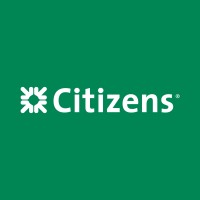Company Cyber Security Posture
NANA
NA Company Details
NA
NA
NA
NA
NA
NA
Scan still pending
NA
NA
Between 200 and 800
This score is AI-generated and less favored by cyber insurers, who prefer the TPRM score.
 NA Global Score
NA Global Score.png)

Company Scoring based on AI Models
| Model Name | Date | Description | Current Score Difference | Score |
|---|---|---|---|---|
| AVERAGE-Industry | 03-12-2025 | This score represents the average cybersecurity rating of companies already scanned within the same industry. It provides a benchmark to compare an individual company's security posture against its industry peers. | N/A | Between 200 and 800 |
Company Cyber Security News & History
| Entity | Type | Severity | Impact | Seen | Url ID | Details | View |
|---|
Company Subsidiaries

NA
Access Data Using Our API

Get company history
.png)
NA Cyber Security News
Strategic Shifts in Japanese Banking: Navigating Asia-Pacific Financials Amid Regional Rebalancing
The Asia-Pacific financial landscape is undergoing a seismic shift as Japanese banks recalibrate their strategies to address domestic ...
Sumitomo Mitsui Trust Bank's Hong Kong Office to Close in 2026, Transfer Client Operations to Singapore
Sumitomo Mitsui Trust's banking unit is looking to close its office in Hong Kong by June 2026 and move its client-facing operations to ...
Sumitomo Mitsui Trust Bank turns to Oracle FSS for tech modernisation
EXCLUSIVE: Sumitomo Mitsui Trust Bank (SMTB), Japan's fifth largest bank, is understood to be going through a major technology revamp on the corporate banking ...
Sumitomo Mitsui Trust Bank invests in S64’s Series A | by Norbert Gehrke | Tokyo FinTech
S64, the global alternatives fintech and solutions partner to the wealth management industry, has closed its Series A funding round which ...
NTT Docomo seeks to purchase SBI Sumishin Net Bank
Docomo is facing falling revenue in the core business of individual mobile users. It has begun focusing on non-communications businesses, such ...
The Top 6 Best Business Banks in Japan
This article delves into the top 6 business banks that are shaping the financial landscape, offering unparalleled services to enterprises.
2019’s top core banking deals
Core banking – a bank's bread and butter, but what deals really stood out in 2019? We've created a list of some core banking deals FinTech Futures thought shook ...
Japan's MUFG cuts CEO, five other executives' pay after 'firewall' breaches
The monthly salaries of Group CEO Hironori Kamezawa and five other executives will be cut by 30% for between two and five months, MUFG said in a ...
Japan's Sumitomo Mitsui Trust dials up risk with alternative investments push
A recent alternative investing deal between Sumitomo Mitsui Trust Bank Ltd. and Apollo Global Management Inc. has underscored the pressure ...

NA Similar Companies

Citizens
At Citizens, we recognize that the journey to accomplishment is no longer linear and that individuals are made of all they have done and all they are going to do. As one of the oldest and largest financial services firms in the United States with a history dating back to 1828, we’re committed to pro

IDBI Bank
Welcome to IDBI Bank's LinkedIn page! We are a leading bank in India, with a rich legacy. At IDBI Bank, we believe in empowering our customers by providing them with a wide range of banking products and services to meet their financial needs. Whether you are an individual, a small business owner,

PT Bank Rakyat Indonesia (Persero) Tbk
Bank Rakyat Indonesia (BRI) adalah salah satu bank milik pemerintah yang terbesar di Indonesia. BRI didirikan di Purwokerto, Jawa Tengah oleh Raden Bei Aria Wirjaatmadja pada 16 Desember 1895. Lebih dari 128 tahun memberi pelayanan terbaik bagi seluruh lapisan masyarakat, BRI turut andil dalam upa

Evergrowing Bank
Evergrowing Banking was established on 2003 after joint-stock system reform, now it has grown to a famous national joint-stock bank. The heaquarter of the bank is in city of Yantai, Shandong Province, with 11 tier-one branches in Qingdao, Jinan, Hangzhou, Chengdu, Chongqing, Yantai, Fuzhou, Kunming

ICICI Bank
ICICI Bank is one of India’s leading private sector banks, offering a wide range of banking products and services to corporate, Small and Medium Enterprises (SME) and individual customers across the country. The Bank offers multi-channel touch points including branches, ATMs, mobile banking, interne

State Bank of Travancore
State Bank of Travancore, the premier bank of Kerala, God's own country occupies the number one position among the public sector banks in number of branches and total business in Kerala. The Bank has uninterrupted profit making since inception. The Bank targets a business level of Rs.1,00,000 cror

Frequently Asked Questions
Explore insights on cybersecurity incidents, risk posture, and Rankiteo's assessments.
NA CyberSecurity History Information
How many cyber incidents has NA faced?
Total Incidents: According to Rankiteo, NA has faced 0 incidents in the past.
What types of cybersecurity incidents have occurred at NA?
Incident Types: The types of cybersecurity incidents that have occurred include .
Additional Questions
What Do We Measure?
















Every week, Rankiteo analyzes billions of signals to give organizations a sharper, faster view of emerging risks. With deeper, more actionable intelligence at their fingertips, security teams can outpace threat actors, respond instantly to Zero-Day attacks, and dramatically shrink their risk exposure window.
These are some of the factors we use to calculate the overall score:
Identify exposed access points, detect misconfigured SSL certificates, and uncover vulnerabilities across the network infrastructure.
Gain visibility into the software components used within an organization to detect vulnerabilities, manage risk, and ensure supply chain security.
Monitor and manage all IT assets and their configurations to ensure accurate, real-time visibility across the company's technology environment.
Leverage real-time insights on active threats, malware campaigns, and emerging vulnerabilities to proactively defend against evolving cyberattacks.




